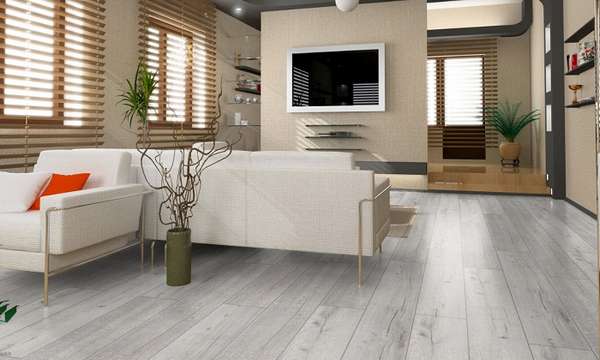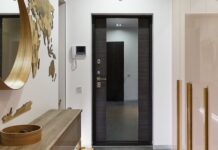In the process of developing a construction project, one way or another, a question arises to which there is no definite answer, what should be the floors in a private house. It can be wooden, concrete, bulk, combined and other structures that have their positive and negative sides. Often, the owners take up the construction work themselves in order to save some money. Let’s look at what floors are better to do in a private house, based on their main characteristics, as well as the sequence of their construction. 29 photos will help us visually supplement the article.
Floors in a private house: what you need to know for the right choice
The desire to equip your home with a durable and super-reliable floor pursues any private developer. In order to find out which floors are better in a private house, let’s turn briefly to the characteristics of the most used structures. These can be floors of wood, concrete and formed on the basis of the screed.
Wooden floors
Wood, as you know, perfectly keeps heat and is environmentally friendly. However, wood is not resistant to moisture, so there will be a need to use waterproofing materials.
Concrete floors
The most durable is considered to be concrete floors in a private house. But there is also a drawback here. Such a monolithic floor should be supplemented with thorough insulation, since concrete itself is a very “cold” material.
Dry floor screed
Relatively young is the floor with a dry screed. Dry floor screed has excellent thermal insulation, the main thing is to ideally lay and tamp all layers so that there are no distortions.
Wooden floors in a private house
The use of natural wood, today, is at the peak of popularity. As we have already said, wooden floors in a private house are particularly warm and environmentally friendly. To this must also be added refined aesthetic qualities. The construction of such a floor can occur by several methods, each of which can be carried out independently.In the process of developing a construction project, one way or another, the question arises to which there is no definite answer, what should be the floors in a private house. It can be wooden, concrete, bulk, combined and other structures that have their positive and negative sides. Often, the owners take up the construction work themselves in order to save some money. Let’s look at what floors are better to do in a private house, based on their main characteristics, as well as the sequence of their construction. 29 photos will help us visually supplement the article.
Floors in a private house: what you need to know for the right choice
The desire to equip your home with a durable and super-reliable floor pursues any private developer. In order to find out which floors are better in a private house, let’s turn briefly to the characteristics of the most used structures. These can be floors of wood, concrete and formed on the basis of the screed.
Wooden floors
Wood, as you know, perfectly keeps heat and is environmentally friendly. However, wood is not resistant to moisture, so there will be a need to use waterproofing materials.
Concrete floors
The most durable is considered to be concrete floors in a private house. But there is also a drawback here. Such a monolithic floor should be supplemented with thorough insulation, since concrete itself is a very “cold” material.
Dry floor screed
Relatively young is the floor with a dry screed. Dry floor screed has excellent thermal insulation, the main thing is to ideally lay and tamp all layers so that there are no distortions.
Wooden floors in a private house
The use of natural wood, today, is at the peak of popularity. As we have already said, wooden floors in a private house are particularly warm and environmentally friendly. To this must also be added refined aesthetic qualities. The construction of such a floor can occur by several methods, each of which can be carried out independently.
When constructing wooden floors in a private house with your own hands, it is necessary to leave small cracks from the walls, since wood, under the influence of temperatures, may change slightly in size. When purchasing material, inspect it carefully – there should be no external defects (cracks, chips). In order to increase durability, wooden floors in a private house should be made of hardwood, such as oak, pine, cedar or larch. Do not forget to also treat all raw materials with antiseptics.




Wooden floors in a private house with their own hands on joists
One of the technologies for laying floors is to build wooden floors in a private house on joists.
- We prepare a high-quality base: remove part of the soil (5 – 10 cm), pour out the sand and ram.
- We lay crushed stone of the same thickness on top and tamp it down again.
- We lay a vapor barrier (roofing material, oilcloth) and proceed to laying the logs on the racks with an approximate step of half a meter.
- The space formed between the joists is filled with a heat-insulating pillow.



